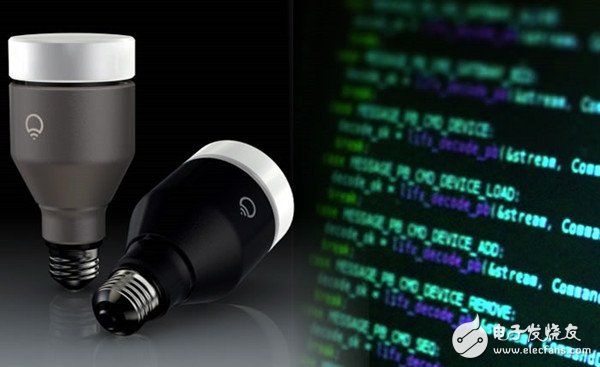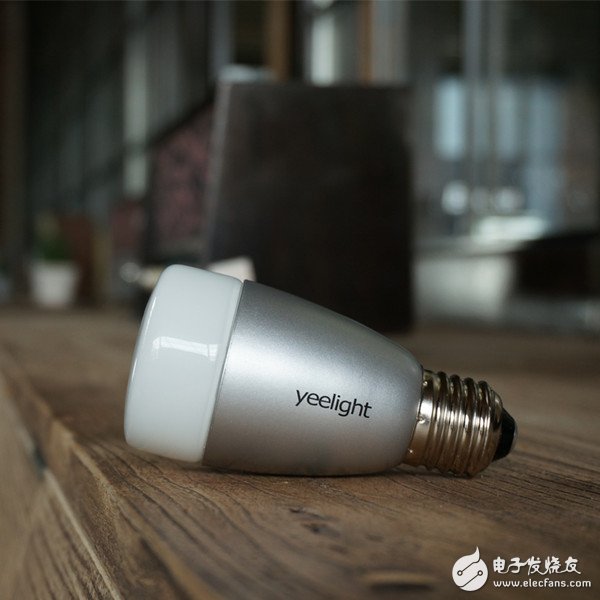Under the wave of the Internet of Things, what kind of communication method is used to connect the hardware to the cloud? This is a headache for all smart hardware entrepreneurs and consumers. As the most fashionable and most technological light factory in the moment, I will venture to introduce the differences between the three modes of ZigBee, Wi-Fi and BLE.
I don't think anyone is more suitable than our yeelight to introduce, because there are three smart lighting products on the market, which correspond to three modes, and explain the difference between our yeelight blue and hue.
1. hue. ZigBee
First explain the origin of the name ZigBee. After the flower is found, the bee will inform the companion of the newly discovered food source location and other information through a special body language. This body language is the ZigZag dance, which is a simple way to convey information between bees. In this sense, ZigBee is named as a new generation of wireless communication technology.

ZLL (ZigBee Light Link) used by Philips hue is an extended set developed on the ZigBee protocol. This protocol is dominated by Philips and hopes to make the smart connection of the lamp easier. The first product can be said to have been opened up from the history of lighting. A new era.
ZigBee is a low-speed, low-power wireless control protocol. It features automatic network formation. Each node of the network can borrow data to transmit data. The network needs a centralized node to manage the entire network, which means that there must be a ZigBee network. A router-like role, the conversion of the ZigBee protocol to the Internet protocol, this extra guy is the Bridge thing in the Hue Starter package, it has no additional use, but can integrate other lights into a network, and Connect to the internet.
The downside is that it increases the cost, increases the complexity of the installation, and can't be directly connected by our mobile phone. It has to be transferred. The advantage is that the Bridge can connect the ZigBee light to the Internet, thus providing more remote access capabilities. (Also means risk), hue is a product based on this technology, each subnet supports about 50 nodes.
ZigBee products typically consume less power and are less expensive than Wi-Fi products, similar to low-power Bluetooth products. The first generation of Hue used TI's 253X as a light solution, which is a mature ZigBee solution with moderate cost performance. From the optical aspect, Philips has accumulated many years of experience in the lighting industry, not only from the multi-color temperature, but also in terms of color. Can achieve most of the gamut range, but unfortunately after the second generation, the cost reduction is greatly reduced, and the reduction of nearly 40% of the lamp beads can be described as a lot of sincerity.
Another one is that Hue is so expensive that even the old US complains about the price. The entry kit is 1699 yuan, including three bulbs + one gateway. Well, it’s really a local tyrant.
ZigBee products typically consume less power and are less expensive than Wi-Fi products, similar to low-power Bluetooth products. Hue's first generation used TI's 253X as a light solution, which is a mature ZigBee solution with moderate cost performance. From the optical aspect, Philips has accumulated many years of experience in the lighting industry, not only from the multi-color temperature, but also in terms of color. Can achieve most of the gamut range, but unfortunately after the second generation, the cost reduction is greatly reduced, and the reduction of nearly 40% of the lamp beads can be described as a lot of sincerity.
Another one is that Hue is so expensive that even the old US complains about the price. The entry kit is 1699 yuan, including three bulbs + one gateway. Well, it’s really a local tyrant.
2. Lifx.Wi-Fi
Wi-Fi, I believe we are all familiar with it. It is a built-in network protocol on our mobile phones. Lifx smart lighting products using Wi-Fi protocol are also intelligent lighting products that can be directly connected to the Internet. Of course, they can also Access directly from your phone.
The advantage of Wi-Fi is that it is relatively fast, can directly access the Internet without a bridge, and can communicate seamlessly with the mobile phone. The main disadvantage is that the Wi-Fi chip has a slightly larger package size and higher power consumption. Lifx standby power may be as high as 1W, while BLE and ZigBee typical standby power consumption is within 0.1w, and from the actual test performance, Lifx is still in the heat of color grading ability and heat control, in the volume of the bulb Providing a maximum power design of 17W, there is indeed a greater risk (voice-over: how long can this light live!). In theory, the access of the WiFi access mode is mainly limited to the number of nodes of the WiFi router (typically tens of nodes).
The other one is the security issue that everyone is currently concerned about. Think about whether the products in the smart home are connected by Wi-Fi. If it is hacked someday, it is really a bit scary.
3. yeelight blue .BLE
BLE (Low-Power Bluetooth Technology) is the latest generation of short-range focus on low-power (button battery sustainable standby for more than half a year), fast connection (only 1-3ms), long-distance communication (up to 50m) The wireless communication specification pays special attention to and optimizes the data exchange of small data packets. It can be said that it is a communication method tailored for the IOT (interoperability test) era of different IoT vendors. The disadvantage is that it cannot be supported by old-fashioned smart phones (only iPhone4S is supported). After the Apple phone and the Android phone after Android4.3, the friends are good to change the phone, now the phone is so cheap, you say it is not)
But over time, most modern smartphones are already supported and are rapidly becoming the standard communication protocol for next-generation smart hardware. After Apple released the iBeacons standard, this non-connected communication method greatly increased the possibility and imagination of the BLE control product. In the Bluetooth 4.1 protocol released later, the BLE product has the self-organizing network features unique to ZigBee. These are all influencing the traditional ZigBee product range. As a representative BLE intelligent lighting product, yeelight Blue products are also rapidly absorbing the benefits of standard communication protocol upgrades, bringing more powerful capabilities and lower cost. To the field of intelligent lighting.

Transparent Glass LED Display has won the favor of customers all over the world with its advantages of energy saving, environmental protection, low operating cost and high business efficiency. Transparent screen in order to meet the requirements of brightness in the process of use, there are positive luminescence and side luminescence options, the brightness can reach more than 5500. The use of transparent glass screen is mainly in Curtain wall building.Store window.Technology exhibition.Commercial space.Creative Presentation and so on.

Compared with conventional display screens, transparent glass screens have the following advantages:
1.Over 70% transparent rate favorable daylight effect;
2.Slim design ,light weight;
3.Cabinet is beautiful appearance,light weight, good heat dissipation and durable;
4.The mask of transparent uses PC with good light-admitting quality, ductility and durability;
5.Fast plugs within cabinets for quick and easy installation;
6.Indoor installation and maintenance, fast.safe, low heat, no ventilator, no noise;

Transparent Glass Led Display
Glass Wall Screen,Transparent Glass Wall Display,LED Screen Solution
Shenzhen Vision Display Technology Co,.LTD , https://www.ledvdi.com